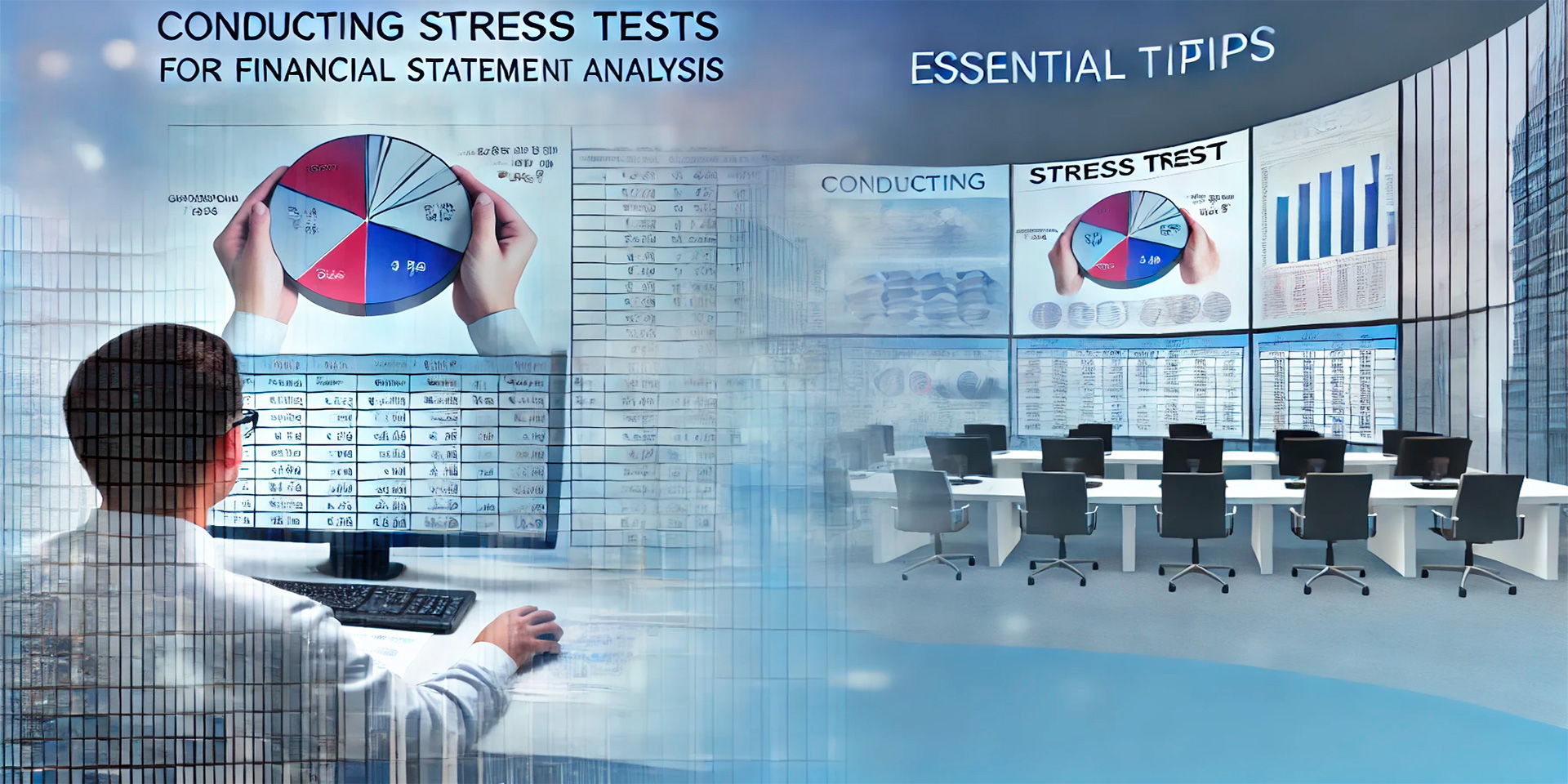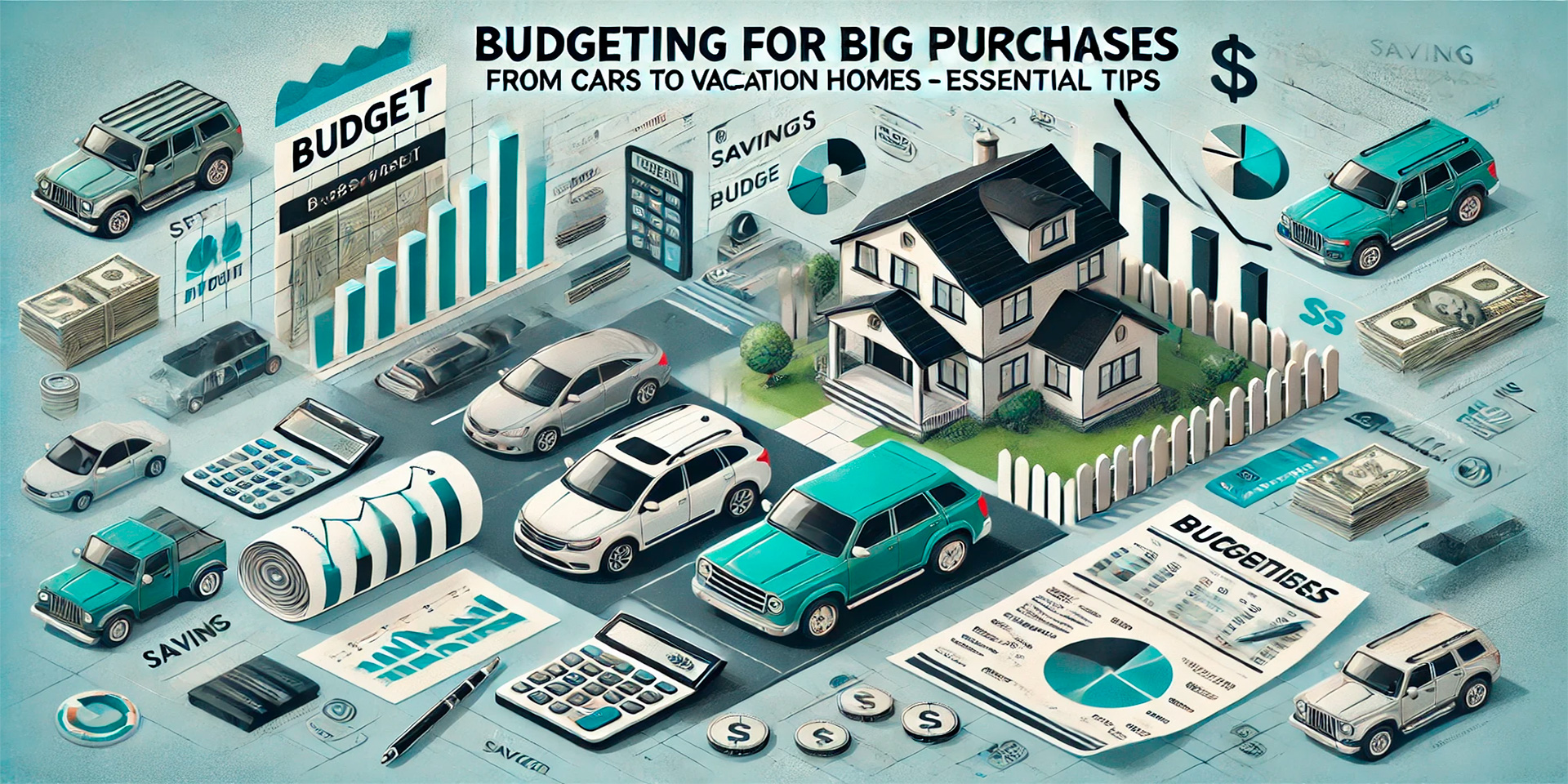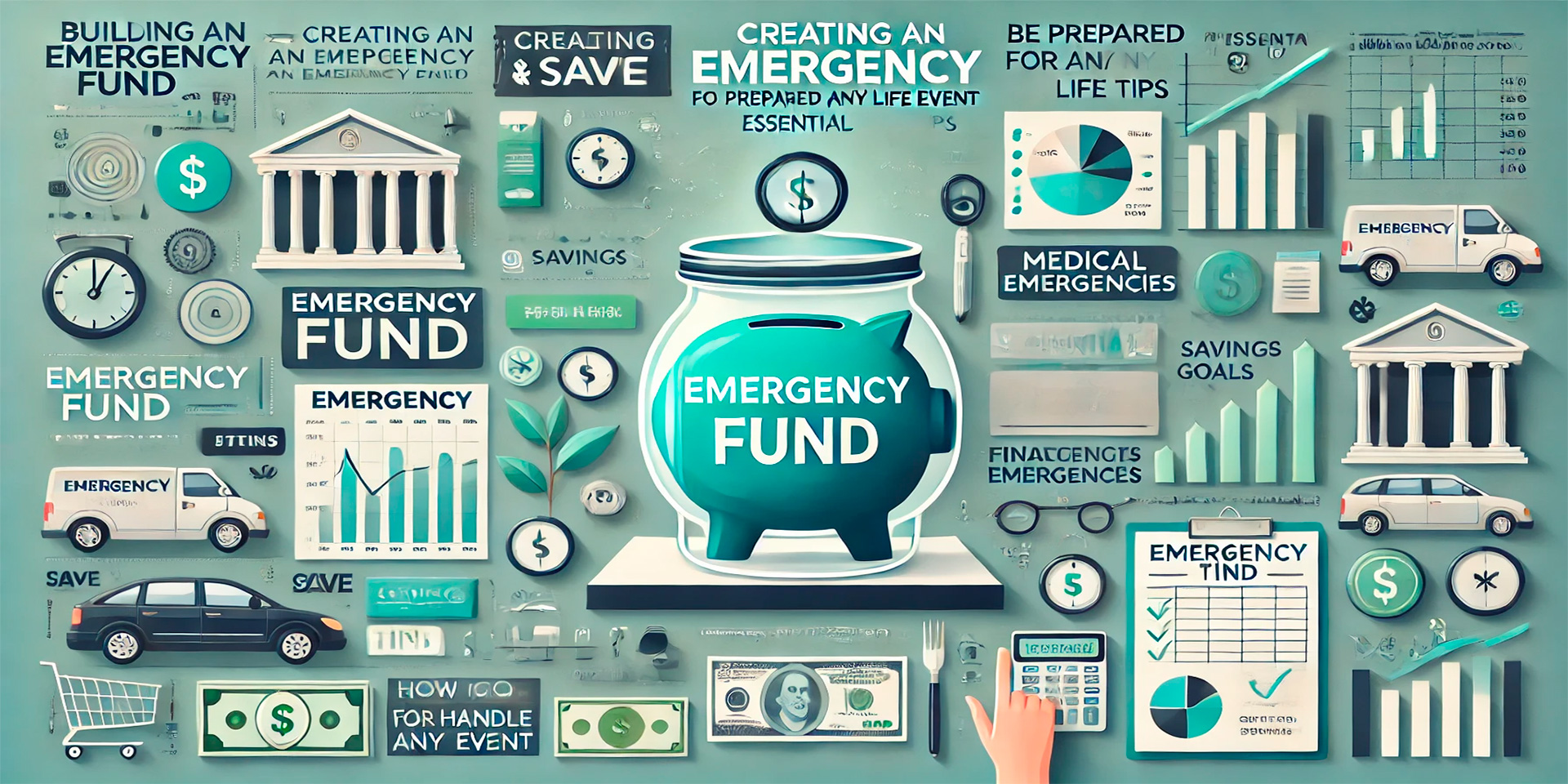
Creating an Emergency Fund: Essential Tips
Creating an emergency fund is crucial to stay prepared for life’s unpredictable twists. An emergency fund covers unexpected expenses like car repairs, medical bills, or job loss, acting as a financial safety net. Without it, you might rely on high-interest loans or credit cards, piling on debt and stress.
To determine the right amount to save, calculate your monthly expenses, covering essentials like rent, utilities, and groceries. Multiply this by three to six months to get your target savings range. Starting with smaller goals, like saving $1,000, can make the process manageable. Automate your savings and cut unnecessary costs to build your fund efficiently.
Maintaining and managing your emergency fund over time is essential. Keep it separate in a dedicated high-yield savings account, ensuring it remains accessible yet earns interest. Replenish it quickly after use and review your contributions regularly to stay on track. This disciplined approach helps you handle crises smoothly, ensuring financial security and peace of mind.
What Is An Emergency Fund And Why Do You Need One?
An emergency fund is a stash of money you set aside to cover unexpected expenses like sudden car repairs, medical bills, or job loss. You need an emergency fund because it acts as a financial safety net, helping you avoid debt and providing peace of mind.
With an emergency fund, you can:
- Avoid debt: By covering unexpected expenses without using credit cards or loans, which often have high interest rates.
- Ensure financial security: By having money to cover your living expenses if you lose your source of income, allowing you to maintain your lifestyle while looking for a new job.
- Reduce stress: Knowing you have a financial cushion to manage emergencies with less anxiety.
You should aim to save enough to cover three to six months of living expenses and keep the money easily accessible, ideally in a high-interest savings account.
Lastly, having an emergency fund helps you handle life’s surprises financially, giving you peace of mind and a secure fallback option.
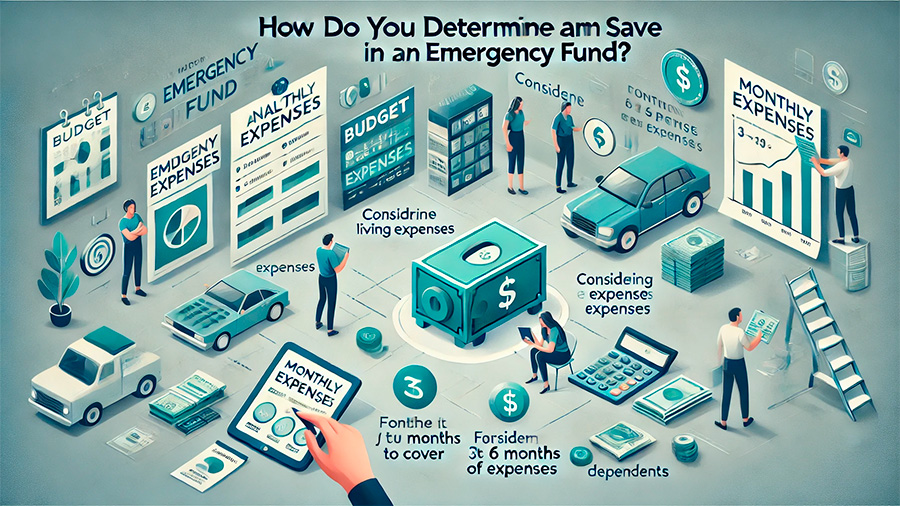
How Do You Determine The Right Amount To Save In An Emergency Fund?
To determine the right amount to save in an emergency fund, start by calculating your monthly expenses. Include all essential costs such as rent or mortgage payments, utilities, groceries, transportation, insurance premiums, and other recurring bills. Multiply this total by the number of months you want to cover. Typically, you should aim for 3 to 6 months’ worth of expenses. For example, if your monthly expenses are $3,000, you would need to save between $9,000 and $18,000.
Next, consider your individual situation. If you have a stable job, you might manage with a smaller fund. However, if your income fluctuates or you have dependents, you might need to save more.
- Use an emergency fund calculator to set a specific goal.
- Set up automatic transfers from your paycheck into a savings account.
- Make regular deposits, no matter how small.
Store your emergency fund in a stable, accessible account like a savings account or money market account. Avoid placing it in stocks or other volatile investments.
Finally, start small and gradually increase your savings until you reach your goal. Regularly review and adjust your savings plan to ensure it meets your current needs.
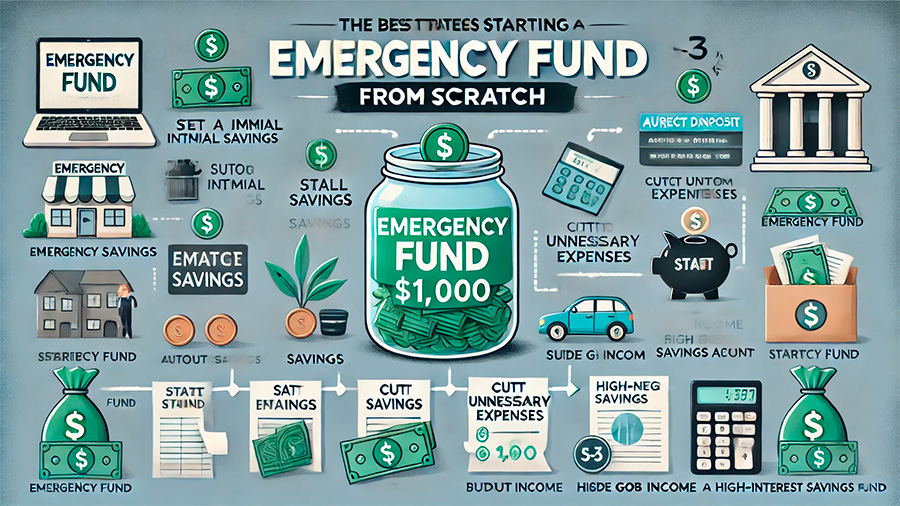
What Are The Best Strategies For Starting An Emergency Fund From Scratch?
The best strategies for starting an emergency fund from scratch are straightforward and actionable.
First, you should set a small initial goal, such as saving $1,000. This makes it easier to get started and gives you an achievable target.
Next, you can automate your savings by setting up direct deposits from your paycheck or automatic transfers from your checking account. This ensures that you contribute consistently without needing to remember to do it manually.
Take a close look at your budget and cut unnecessary expenses. This frees up more money that you can then save.
If you have any additional income from side gigs or windfalls like tax refunds or bonuses, you should allocate these directly to your emergency fund.
You might start with a smaller “starter fund” of $500 to $1,000 if you have debt. This way, you can focus on building a larger fund once your debt is under control.
Keep your emergency fund in a high-interest savings account so you can access it easily in an emergency.
Finally, adapt your goal to cover 3-6 months of living expenses, depending on your job security and personal needs.
In closing, by setting a small initial goal, automating your savings, cutting unnecessary expenses, using additional income wisely, starting with a manageable fund, keeping your savings accessible, and adapting to your needs, you’ll create a robust emergency fund that provides financial security and peace of mind.
How Can You Maintain And Manage Your Emergency Fund Over Time?
To maintain and manage your emergency fund over time, you need to follow several key strategies:
First, keep your emergency fund separate in a dedicated high-interest savings account. This keeps it accessible for emergencies but not too easy to spend on non-essentials.
Next, set up automatic transfers from your paycheck to your emergency fund. This ensures regular contributions without needing constant reminders.
After using your emergency fund, start replenishing it immediately. Consistently contribute to maintain the optimal level for your needs.
Choose the right type of account, like a high-interest savings account or a Tax-Free Savings Account (TFSA), to grow your fund while keeping it accessible. Avoid high-risk investments that might compromise the principal amount.
Be mindful of inflation. Ensure you’re not holding too much cash that could lose value over time. Balance your emergency fund to meet immediate needs while considering other investment opportunities for excess funds.
If you don’t have an emergency fund yet, consider pausing contributions to other investments temporarily to build your fund. This creates a safety net that secures your financial future.
Regularly review and adjust your budget to continue saving without stress. Allocating a specific amount each month simplifies the process and instills the habit of saving.
Overall, by keeping your emergency fund separate, automating contributions, replenishing promptly, choosing the right account, adjusting for inflation, pausing other investments if necessary, and regularly reviewing your budget, you ensure your emergency fund is ready to support you during unexpected events, providing financial security and peace of mind.
What Are The Essential Steps To Build An Emergency Fund Quickly?
To build an emergency fund quickly, you should start by setting a small, achievable goal, like saving $1,000. Here’s how you can do it:
- Set a Specific Goal: Target a modest amount first, like $1,000. This makes the task less daunting and gives you a clear milestone to reach.
- Automate Savings: Set up recurring automatic transfers from your checking to a dedicated savings account. This ensures you save consistently without having to remember each month.
- Cut Unnecessary Expenses: Identify and reduce non-essential spending. You might cut back on eating out, subscriptions, or other discretionary expenses.
- Sell Unwanted Items: Turn unused items into cash. Sell old clothes, electronics, or anything else that’s just taking up space. Use this money to boost your emergency fund.
- Use a High-Yield Savings Account: Put your emergency fund in a high-yield savings account to earn better interest while keeping your money accessible.
- Check Your Budget: Review your income and expenses to see where you can save more. Use apps to track and manage your spending, making it easier to find areas to cut back.
As a final point – staying disciplined with these steps, setting clear goals, automating your savings, and cutting unnecessary expenses will help you quickly build a robust emergency fund, providing a financial cushion for at least three to six months of living expenses.

